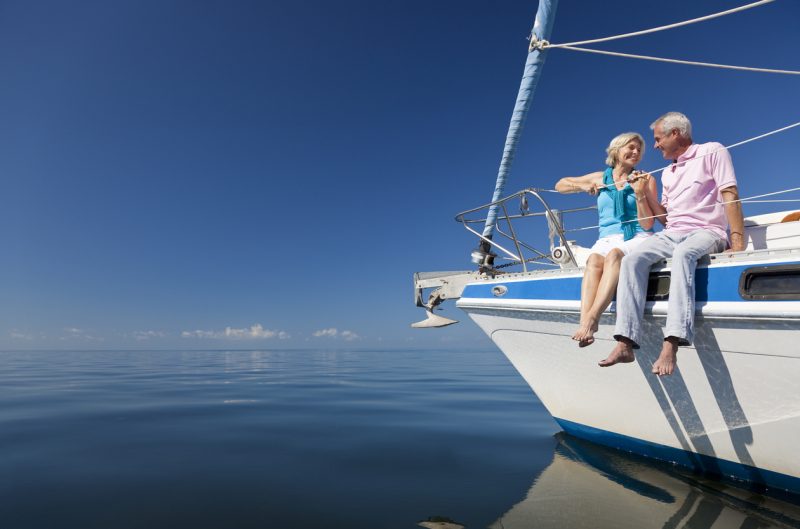Safe Summer Boating Techniques

Although boating is a year-round activity for serious enthusiasts, for many it is unmissable summer fun. This sun-drenched season would not be the same without time out on the water. Boating speaks of freedom — gliding through the water, feeling the spray of the wake, nothing but the sky above and the horizon beyond.
Usually, though, summer boaters share the water with many other vessels, and natural conditions must be considered. Just as with automobiles on land, the joy of boating comes with responsibilities. The National Safe Boating Council has a mission to help everyone enjoy the water safely. In keeping with this aim, the organization has developed what it calls the Boating Safety Seven. Bring these safe boating techniques on board each time you set sail.
1. Create a Float Plan
No matter what size your vessel is, file a float plan with a reliable person. This vital document is just as important as boat insurance, because it sets out where and when you will be sailing and when you expect to return. The U.S. Coast Guard recommends including a photograph of your boat with your float plan.
2. Take a Safety Course
Some aspects of boating safety may seem to be common-sense knowledge, but do not take chances. Enroll in a boating safety course.
3. Sail With all Required Safety Gear
These are the Coast Guard minimum requirements for recreational boats:
- Sound-producing device such as a horn, whistle, or bell
- Fire extinguishers of adequate size
- Boat lights
- Ventilation system
- Visual distress signals such as flares
- One Type I, II, or III personal flotation device approved by the Coast Guard for each person onboard and anyone being towed
Sailing without this gear is illegal.
4. Wear Life Jackets
You and your passengers should wear personal flotation devices when out on the water.
5. Know the Weather and the Water
Before setting sail, check the weather forecast and water conditions. The National Oceanic and Atmospheric Administration, or NOAA, issues a specific marine forecast. Bring a NOAA weather radio with you on your outing.
6. Remember the Engine Cut-Off Switch
An engine cut-off switch or device is attached to a boat operator’s clothing or personal flotation device. Should an operator be ejected from the helm or even overboard, this device immediately shuts down the engine and propellers. Some boat insurance policies may even require that cut-off devices be used.
7. Sail Sober and Act Considerately
Boating under the influence of alcohol can be even more dangerous than driving drunk. Boat operators must be aware not only of other vessels on the water but also of swimmers, of weather conditions, and of marine life in the vicinity. Alcohol slows reaction times. Do not risk any lives of humans or marine animals by drinking and boating.
Boating is a popular summer pastime, but it brings responsibility. Follow safety rules and best practices to keep voyages safe and enjoyable.
About Byrnes Agency
At Byrnes Agency, we offer insurance solutions that can be tailored to meet your specific needs. Whether you’re looking for personal policies or commercial coverage, we have the right coverage for you. To learn more about our products, contact us today at one of our two locations.
If you’ve enjoyed what you’ve read here and would like to know when we’ve published a new blog post, please “like” us on our Facebook page, and share this with your Connecticut neighbors.
Dayville Office
Phone: (860) 774-8549
394 Lake Rd
Dayville, CT 06241
United States
info@byrnesagency.com
Hours of Operation: Monday- Friday 9:00am-5:00pm
Norwich Office
Phone: (860) 886-5498
6 Consumers Avenue
Norwich, CT 06360
United States
info@byrnesagency.com
Hours of Operation: Monday- Friday 9:00am-5:00pm
